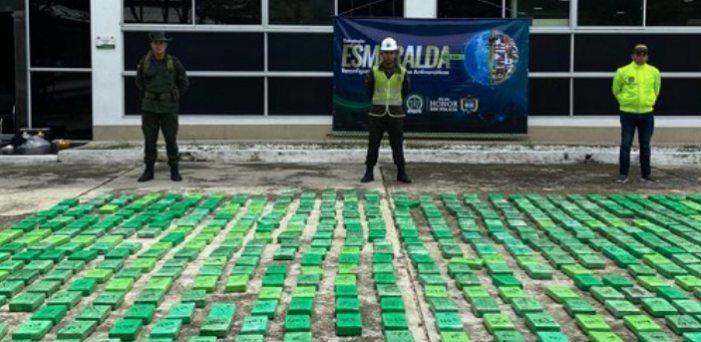
More cocaine was seized in Colombia and Ecuador in 2023 than in 2022. Authorities in Colombia seized 739.5 tons of cocaine, 12.1% more than in 2022. Ecuador intercepted almost 200 tons of cocaine last year in 2023, slightly more than 2022. This is evident from an inventory by InsightCrime.
By @Wim van de Pol
For comparison: almost 60 tons of cocaine will be intercepted in the Netherlands in 2023.
According to United Nations estimates, more than 2,000 tons of cocaine are produced annually, of which more than half is likely to be seized each year.
The estimated production for 2023 is not yet known, the United Nations UNODC will release the World Drug Report next month containing the figures for 2022.
Priority
Most cocaine is produced in Colombia. Production country number two is Peru. The police seized considerably less cocaine there: 21.5 tons.
According to InsightCrime, the increase in seizures in Colombia is the result of a shift in government priorities: less attention to the production of coca leaf and coca paste, more efforts to combat cocaine (paste) producers and large-scale traffickers. Moreover, there was a lot of coca leaf on the market last year at low prices.
Airplanes
In Peru, cocaine production is concentrated in a mountain region in the southeast of the country that is very difficult to access: the VRAEM (Valle de los Ríos Apurímac, Ene y Mantaro). From there, cocaine and cocaine paste are sent on planes to Bolivia and Brazil.
InsightCrime writes that both coca leaf cultivation and cocaine production have expanded into even more difficult-to-reach areas, southeastward toward the Amazon and the borders of Brazil and Bolivia. The cocaine goes to Europe and Asia via (mainly) the port of Santos in Brazil, and the ports in Paraguay, Uruguay and Argentina.
This probably involves a lot of cocaine, but the authorities in Peru are unable to properly control these areas or do not want to give priority to them. That would explain the low number of tons seized (21.5 tons).
Ecuador
Ecuador produces almost no cocaine itself, but is an important transit country for Colombian cocaine, through the container port of Guayaquil. In Ecuador, the number of tonnes seized increased from approximately 180 to 200 tonnes of cocaine between 2022 and 2023.
Cocaine and violence
InsightCrime notes that an increase in cocaine trafficking directly stimulates an increase in violence in certain areas.
But the reasoning for this is inadequate. The website mainly points out the positive correlation between the number of murders in Ecuador and the number of kilos of cocaine seized.
However, such a correlation does not provide causal evidence. And what about Costa Rica? There, the number of seized kilos decreased while the number of murders increased by tens of percent.
Moreover, it is questionable whether the number of seized kilos is indicative of the number of “blocks” that are actually transited or exported in a country (probably not in Peru).
No knowledge
Virtually no scientific research has been conducted into the question of exactly how violence is related to the current global cocaine trade, there is simply no knowledge about it. What is certain is that a number of factors are important.
The level of competition between criminal groups at important junctions is of great importance. The nature and success of the control also plays a role. Just like the extent to which a society and the police have been affected by corruption.




